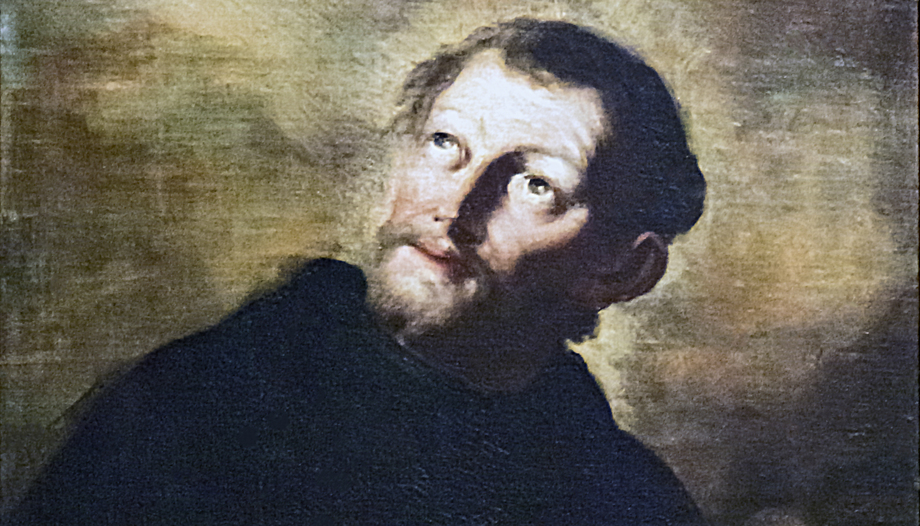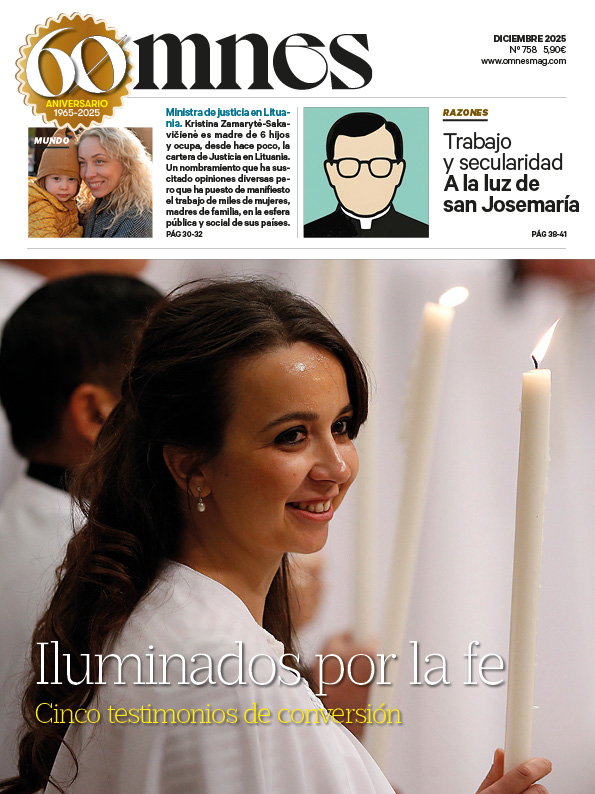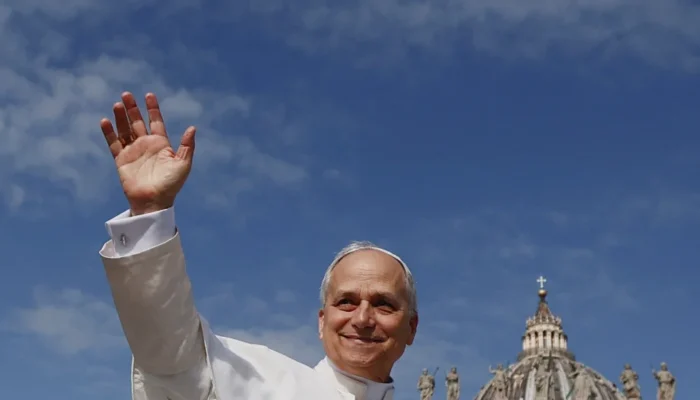May 26 is the feast of St. Philip Neri, co-patron saint of Rome and a saint to whom Christianity owes so much.
Life
Florentine by birth (he was born in 1515), he moved to Rome at the age of nineteen and never left it again, leading for about ten years an austere lay life of intense prayer (which he alternated with his work as a tutor for children). He spent entire nights keeping vigil in the catacombs of San Sebastiano, where, in 1544, on the eve of Pentecost, he was the protagonist of a sensational event: an orb of fire - it is said - entered his chest through his mouth.
From then on he began to manifest a physical anomaly: his heart beat loudly and irregularly, audible to those around him and, when he died, an examination of his body revealed that his ribs had arched outwards, precisely because of the pressure of his heart, which had dilated two and a half times more than normal (which would make his survival impossible, while Neri lived 50 years in those conditions).
From that Pentecost, Philip intensified his work of evangelizing reform "from below": he frequented young adults and professionals (not children or adolescents, as is often thought), he went to hospitals, prisons, public squares, markets, approaching people with simplicity and a direct, ironic, but always profound style.
Despite much reluctance on his part, he was ordained a priest in 1551, at the age of 36, and then exercised his ministry with great dedication (he spent ten hours a day in the confessional).
A great admirer of the Dominican Girolamo Savonarola, he distanced himself from his rigorism: for him, it was not excessive penances, devotions and mortifications, but joy, simplicity and self-irony that were antidotes to pride and an effective aid to spiritual growth.
Friend and advisor to several Popes, he died on May 26, 1595. He was canonized in 1622 along with Ignatius of Loyola and Francis Xavier (his friends and companions in Rome), Teresa of Avila and Isidore the Labrador.
Legacy
Although effervescent in character, Philip Neri loved discretion and always tried to divert attention from himself, as true leaders do (anthropologist Paulo Pinto defines detachment as the transfer of a spiritual leader's charisma to his community after his death, when followers unite around the values he embodied, not his person). In fact, far more famous than he were the lay people who grew up, humanly and spiritually, under his aegis. Just think of musicians like Giovanni P. da Palestrina or Giovanni Animuccia (the Spanish priest and composer Tomás Luis de Victoria also frequented the Oratorio).
Another "Oratorian" figure worth mentioning, in addition to the saintly priest John Henry NewmanThe great Spanish architect Antoni Gaudi, a devotee of St. Philip Neri and an assiduous layman of the Oratory of Barcelona (he was run over by a streetcar on his way to evening prayers), whose beatification process is underway.
In short, Neri was characterized by a spirituality marked by joviality, but also by nonconformism towards his own person or towards a preconceived norm. In fact, he never wanted to be considered a "founder", stressing, rather, that holiness is accessible to everyone according to their own characteristics and that true spiritual reformation, as well as true penance, begins with love, smiling, accepting one's own life and that of others for what they are and not for what we would like them to be.
The Oratory
The Congregation of the Oratory, officially born in 1575, was a new institution for the time, to guarantee a stable form to the priestly community that had arisen around Philip Neri, in which the priests lived in community but without religious vows to dedicate themselves to the service of the laity and to the needs of the apostolate in the Oratory.
In a Rome still marked by the sack of 1527 and by a widespread moral and religious crisis, Philip, still a layman, had in fact "invented" the Oratory to foster a daily relationship with God and with his brothers in the faith, characterized also by prayer meetings with friends in his small room in the church of San Girolamo della Carità (where he lived). Oratorio, in fact, comes from the Latin "os", mouth, to indicate the intimate relationship, mouth to mouth, between God and man. In these daily meetings, the Word of God was treated familiarly and shared, with the active participation of the laity (not as passive listeners, as in Mass homilies) in prayer, reflection and sharing, something unheard of at the time (as was the daily Mass).
Music
One of the distinctive features of the oratorio is its music. In fact, there is talk of "oratorian" music, and even of Felipe Neri as a precursor of the musical genre known as oratorio.
Philip's genius was to have understood that music is a universal language and favors the spread of the Gospel message, even among the popular classes who were then illiterate and unable to understand Latin or liturgical music. For this reason he began to use songs and melodies famous at the time, often modifying their verses or their writing, or having new ones written.
From this idea arose the musical genre of the oratorio (often a sacred alternative to opera), whose most famous composers were Carissimi, Charpentier, Haydn and, in Protestant circles, Handel (his is the most famous oratorio of all: "The Messiah") and Bach ("Passion according to St. Matthew" and others).
People are often convinced that to reintroduce baroque musical forms (or niche ones, such as folk) to contemporary audiences is to retrace the steps of St. Philip Neri, nothing could be more wrong. Such works are certainly musical masterpieces, but the original idea is to speak to people in a language they are familiar with, so pop/rock music, or musical music, in the non-liturgical realm, are the forms that would come closest to what Philip was thinking. It's a bit like what a number of Protestant or Catholic (especially charismatic) groups do today: contemporary musicality, professionally composed and arranged songs, Christian texts and meanings. All this, however, outside the Mass, where, precisely, there is the possibility of "making oratorio".
Modern devotion
Philip Neri is the son of modern devotion, a spiritual renewal movement of the 14th-15th centuries that sought to build a more intimate and subjective religiosity, an "individual spirituality", as opposed to the collective piety of the Middle Ages.
Its birth is due in particular to Geert Groote (1340-1384), a Dutch Catholic deacon and preacher, who adopted as his Magna Carta the book of Thomas of Kempis The Imitation of Christ, centered on the importance of recollection and individual prayer, personal reading of the Bible and the imitation of Christ in ordinary life: mysticism incarnated in reality. This movement also focused on the lay apostolate, spreading from Holland to Belgium, Germany and France, and then to Spain and Italy, and influencing some of the pillars of the Catholic Counter-Reformation: Jan van Ruusbroec, Teresa of Avila, John of the Cross, Ignatius of Loyola and, in fact, Philip Neri, with Francis de Sales as his continuator. These last two later inspired St. Josemaría Escrivá to found Opus Dei.
The concept of modern devotion found its definitive legitimization with the Second Vatican Council and the apostolic exhortation "....Christifideles Laici" of John Paul II.
Philip Neri, like so many saints before and after him, was one of those leaders, or fathers in the faith, whom Paul urges to refer to by looking at the outcome of their lives imitating their faith (not imitating them directly, then). I would go on to say that he was a "Homo sapiens" par excellence, if we take into account that the human being, made of earth (humus), is also sapiens (from the Latin "sapere"), a term that indicates, more than erudition, wisdom: the having and giving of taste.
The three "H's
In his life we find what I call "the three H's": "humilitas"; "humanitas"; "humor". They are the three ingredients that make it possible to be "homo sapiens", therefore men and women who have and give flavor (and wisdom), and they all derive from the same Latin root, "humus", which is also that of "homo" (man):
"Humilitas" (humility): awareness of one's own limitation. Despite being made of earth and being poor and defenseless before age, death and God, one must be aware of one's divine nature, with the dignity that goes with it. True humility is thus the right balance between earth and heaven, healthy realism;
"Humanitas" (humanity): consequent to humility, it is the respect for oneself and for others that can only come from knowing oneself in relationship first with God and then with one's neighbor. Only with humility and humanity (relationship) can one be a gift to others;
"Humor" (humor): true humility, united to the joy of relationship with others, but above all to the happiness of being looked upon and loved by God (who "looked upon the humility of his servants") leads to an inevitable lightness: one does not take oneself too seriously and, when one makes mistakes, one forgives oneself and moves on, laughing at one's own and others' faults, but a laughter that is not mockery or ridicule, but simply "turning a blind eye".







